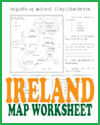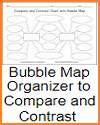| Printable Blank Old Time Scroll |
|---|
| www.studenthandouts.com ↣ Graphic Organizers ↣ Graphic Organizers: Lists |
 |
    |
|
This printable sheet is a fun way to get kids busy writing. This medieval-looking scroll can be used by students to write news stories or anything else they would like to write.
Large box gives plenty of room for writing. Click here to print. Paper was relatively expensive during the Middle Ages for several reasons. Raw Materials: The primary raw material used to make paper in the Middle Ages was rags, typically made from linen or cotton. The production of rags required significant agricultural resources, and the cleaning and processing of these materials were labor-intensive. This made the acquisition of raw materials expensive. Labor-Intensive Production: The process of converting rags into paper was labor-intensive. It involved tearing the rags into small pieces, soaking them in water, and then beating and mashing the fibers into a pulp. The pulp was then spread onto screens, pressed, and dried. All of these steps required a considerable amount of labor, which was costly. Small-Scale Production: Paper production during the Middle Ages was often carried out on a small scale. It was a craft-based industry, and paper mills were not as mechanized or efficient as they are today. Small-scale production tended to be less cost-effective. Limited Access to Technology: Medieval paper mills lacked the advanced technology and machinery available in later centuries. This limited their efficiency and output, making the production process slower and more costly. Expertise and Skill: The craft of papermaking required a skilled workforce, from the initial collection and preparation of rags to the various stages of paper production. Skilled labor was typically more expensive. Water and Energy Sources: Paper mills needed a reliable source of water to power machinery for pulp processing. Securing these resources and maintaining them was often costly and required investment. Transportation Costs: Transporting raw materials to paper mills and distributing finished paper products could be expensive, especially in regions where mills were not in close proximity to sources of rags or population centers. Market Demand: While paper was in demand for various purposes, such as books, documents, and manuscripts, the production was limited by the factors mentioned above. The combination of limited supply and high demand contributed to higher prices. Quality and Durability: Producing high-quality paper that was durable enough for important documents or books required more time and effort, further driving up costs. It is important to note that the cost of paper during the Middle Ages varied by region, depending on local resources, technological advancements, and the specific demands of the market. As technology improved and economies grew, the cost of paper production decreased, making paper more accessible and affordable in subsequent centuries. |
| www.studenthandouts.com ↣ Graphic Organizers ↣ Graphic Organizers: Lists |








